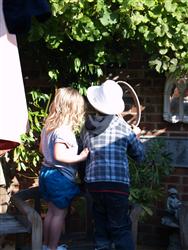 LEARN THE ENDLESS POSSIBILITIES IN PHOTOGRAPHING THE HUMAN SUBJECT!
LEARN THE ENDLESS POSSIBILITIES IN PHOTOGRAPHING THE HUMAN SUBJECT!
When we think of photographing people, we automatically think of taking a portrait, but not all people photography is portraiture. A photographic portrait focuses on the person and attempts to convey an image of what or who the person is, whether physically, or perhaps spiritually or emotionally. However, people can also be photographed in other ways, where the focus might not be the individuals being photographed, but the social or cultural context (fashion, news events, sporting events etc.) or their relationship to the scene in which they are placed.